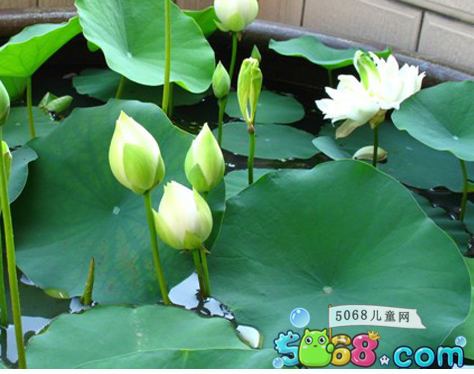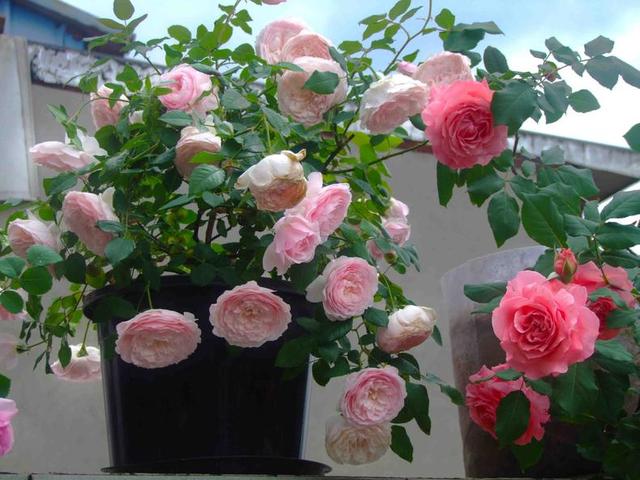Culture methods and pest control of Gladiolus
Gladiolus has high ornamental value and can be used as flower basket, bouquet, vase and so on. It can also arrange flower beds and special flower beds. It is also one of the four largest cut flowers in the world. It has a good reputation. The following editor introduces the training methods of Gladiolus. I hope you all like it.

Culture methods of Gladiolus
1. Soil: gladiolus is very fertile and sandy. It needs good drainage. It is most suitable for sand slopes with good drainage. The pH value should be 5.66.5. It is not suitable for growing in clay.
2, watering: gladiolus is a kind of flower, which needs more water. Timely watering and keeping the soil moist are important measures to promote more flowering, such as heat and heat, should be sprayed to humidify, lower the temperature, and pay attention to drainage after rain.
3, temperature: the optimum temperature for the growth of Gladiolus is 20 ~ 25 °C in the daytime and 10 ~ 15 °C at night, the temperature is higher than 27 °C, the petal is easy to burn, and the growth is slow below 10 °C.
Sunshine: gladiolus is intolerant to yin. This is a long-day plant with 16 hours of light every day. The varieties of cut flowers are greatly affected by light. The sun is strong, resistant, bright and lasting, but the hot summer also avoids strong direct sunlight.
Fertilization: gladiolus is a shallow-rooted plant. Fertilizers should be applied shallowly. Fertilizer should be balanced with NPK. Topdressing should be applied to two true leaf stages (after flower bud differentiation) and heading stage. Re-apply potash fertilizer, and pay attention to control nitrogen fertilizer in the later stage, so as to avoid plant growth and lodging. The land for producing light bulbs should be based on the addition of potash fertilizer.
Growth habits of Gladiolus
Gladiolus is a warm plant, but the growth temperature is too high to be cold. The growth temperature is 20 °C and 25 °C. the corm can germinate at a soil temperature above 5 °C. In typical long-day plants, long-day sunshine is beneficial to flower bud differentiation, lack of light will reduce the number of flowers, but after flower bud differentiation, short-day sunshine is beneficial to flower bud formation and early flowering. Summer flower bulbs must be stored indoors in winter and the room temperature must not be less than 0 °C. The cultivated soil is suitable for fertile sandy loam, and the pH value is less than 7. 5%. Especially fertilizer, phosphate fertilizer can improve the quality of flowers, potash fertilizer can improve the quality of bulbs and the number of particles.
Pest control of Gladiolus
1. Mosaic disease
Mosaic mainly infects leaves, as well as flowers and other parts. In the early stages of the disease, chlorotic horns and dots appear on the leaves. Due to the limitations of the lesions, most of the lesions are polygonal, and later become brown, diseased leaves, yellowing and deformation. Diseased plants are short, flowering ears are short, and seriously diseased plants cannot extract spikes. In early summer, the symptoms of new leaves are particularly obvious, summer symptoms are not obvious, there are hidden symptoms.
[prevention and control] strengthen quarantine, control the occurrence of diseases, detect corms, select virus-free bulbs, carry out virus planting, reduce flower reinfection, remove diseased plants in flower beds in time, and prevent each other. Infected. In the event of the disease, 58% mancozeb WP 500x solution or 75% chlorothalonil WP and 50% carbendazim WP 1000 times were sprayed every 7 days. Usually, it can be sprayed 3 to 4 times.
2, dry rot
Dry rot mainly damages the bulbs, leaves, flowers and roots of plants. When the plant starts, it starts yellowing from the good outer leaves, then spreads to the inner leaves, and then wilts later.
[prevention and control] try to avoid planting flower beds continuously. It is not suitable to apply more nitrogen fertilizer and increase the amount of phosphate and potash fertilizer. The front light bulb of the plant can be soaked in 50% carbendazim for 500 times for 30 minutes. In the early stages of plant disease, spray 50% zinc and 1000 times the solution, spraying foliar every 7 days, usually 3 times.
3. Leaf spot disease
[symptoms] pathogens can infect leaves and bulbs. After infection, the leaves produced brown spots, which gradually expanded and darkened, resulting in leaf withering. After the light bulb was infected, the plant grew so short that it did not even bloom.
[prevention and treatment] rotifer, the disease area must be rotated to reduce the pathogenic seedling, corm treatment, corm should be dried and stored after harvest to prevent corrosion, 50% Fumei double disinfection before planting, and then planting, chemical control can spray 75% chlorothalonil 800 times or contain 65% zinc.
4, scab disease
[symptoms] scabs are mainly harmful to bulbs, and sometimes they are harmful to leaves. Water-stained round lesions occur after corm infection. The color darkens gradually from dark to dark brown. The edge of the lesion was prominent and sunken in the middle. Watery soft rot occurs after leaf infection.
[prevention and treatment] Disease-resistant cultivation, choose a highly dry and ventilated environment, pay attention to drainage, rotation, and maintain field hygiene. The disease can only be prevented by treatment and there is no specific drug.
5. Fusarium disease
[symptoms] Fusarium mainly occurs on bulbs and sometimes infects leaves and flowers. At the beginning of the disease, small reddish-brown spots appear, which gradually expand and sag and contract, and even rot, and then grow white filaments. After sowing the injured ball, the light growth was poor, the flowering was deformed, and the heavy seedlings could not germinate or die at the seedling stage.
[prevention and control] double selection and disinfection of light bulbs, selection after harvest and removal of disease pills, soak the bulbs in 0.5% formalin solution for 2 hours, wash them with warm water and dry to the next spring, and choose a good time to sow seeds and disinfect them with 500 times 5% carbendazim solution, and then plant them to avoid continuous cropping.
6, gray mold
[symptoms] Botrytis cinerea often occurs on leaves and petals. At the beginning of the disease, small spots often appear grayish brown, which gradually expands and botrytis appears on the surface of the lesion.
[prevention] reasonable preservation of light bulbs, keep the environment dry, keep the culture environment light ventilation, good drainage, chemical control, 80% Daxian zinc wettable powder 500 times 700 times liquid spray effect is better.
7, Hummer
[symptoms] the adults and nymphs of thrips usually hide among the leaves during the day and climb to the leaves on cloudy days or at night to destroy plants. The leaves, stems and flowers of the plant are mainly bitten, causing the leaves to change color, leaving white-gray spots of food and egg-laying marks on the Corolla, causing the petals to curl.
[prevention and control] it can be sprayed with 1000 times 40% dimethoate EC or 80% dichlorvos EC.
Time: 2019-05-13 Click:
- Prev

Planting methods and pest control of lotus bowleri
The blooming flowers of lotus bowls are very large and brightly colored. It also gives off fragrance and grows well. It is a precious aquatic flower. When breeding, we should pay attention to the method of making beautiful lotus bowl. The following editors introduce the planting methods and pest control methods of lotus. I hope everyone likes it.
- Next

How to raise rose on the balcony
Three years from the moon, from a basin to a complete balcony, how did he do it? It is not easy to rise the moon from the beginning of the pot to the balcony now! Many people envy the great god who ascended to heaven. In fact, God is fed by countless roses. Can become the god of the moon, some time ago has burned a lot of money
Related
- Fuxing push coffee new agricultural production and marketing class: lack of small-scale processing plants
- Jujube rice field leisure farm deep ploughing Yilan for five years to create a space for organic food and play
- Nongyu Farm-A trial of organic papaya for brave women with advanced technology
- Four points for attention in the prevention and control of diseases and insect pests of edible fungi
- How to add nutrient solution to Edible Fungi
- Is there any good way to control edible fungus mites?
- Open Inoculation Technology of Edible Fungi
- Is there any clever way to use fertilizer for edible fungus in winter?
- What agents are used to kill the pathogens of edible fungi in the mushroom shed?
- Rapid drying of Edible Fungi

